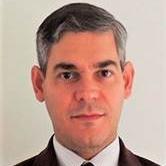Advances and Challenges in Hydrological Modeling and Engineering
A special issue of Water (ISSN 2073-4441). This special issue belongs to the section "Hydrology".
Deadline for manuscript submissions: closed (31 May 2022) | Viewed by 18894
Special Issue Editors
Interests: integrated water resource management; arid-zone hydrology; advanced and high-performance hydrological modeling and unsaturated zone hydrology
Special Issue Information
Dear Colleagues,
Hydrological modeling and engineering are playing an increasing role in tackling climate change and climate variability. Recent developments and advancements in methodology and techniques in hydrological modeling are making great contributions to resolving water-related sustainability issues in society as well as broadening our understanding of the principles governing the hydrosphere. However, there is a strong need to synthesize recent advancements in methodologies, techniques, and theoretical understanding of hydrological modeling at various scales and under different conditions. The aim of this Special Issue is to gather high-quality and novel findings addressing new and advanced aspects of hydrological modeling, such as combined use of hydrological modeling with neural networks, AI, as well as business intelligence (BI) for decision making; seamless and multi-model coupling of different modeling techniques and platforms for increased efficiency; efficient and advanced model calibration and validation; assessment of critical steps and gaps for hydrological modeling. We welcome state-of-the-art manuscripts with original findings, novel methodology development papers, as well as in-depth reviews.
Prof. Dr. Linus T. Zhang
Prof. Dr. Jorge Alberto Martins
Guest Editors
Manuscript Submission Information
Manuscripts should be submitted online at www.mdpi.com by registering and logging in to this website. Once you are registered, click here to go to the submission form. Manuscripts can be submitted until the deadline. All submissions that pass pre-check are peer-reviewed. Accepted papers will be published continuously in the journal (as soon as accepted) and will be listed together on the special issue website. Research articles, review articles as well as short communications are invited. For planned papers, a title and short abstract (about 100 words) can be sent to the Editorial Office for announcement on this website.
Submitted manuscripts should not have been published previously, nor be under consideration for publication elsewhere (except conference proceedings papers). All manuscripts are thoroughly refereed through a single-blind peer-review process. A guide for authors and other relevant information for submission of manuscripts is available on the Instructions for Authors page. Water is an international peer-reviewed open access semimonthly journal published by MDPI.
Please visit the Instructions for Authors page before submitting a manuscript. The Article Processing Charge (APC) for publication in this open access journal is 2600 CHF (Swiss Francs). Submitted papers should be well formatted and use good English. Authors may use MDPI's English editing service prior to publication or during author revisions.
Keywords
- new development in hydrological modeling
- multi-model hydrological modeling
- hydrological modeling coupled with NN (Neural Network), AI (Artificial Intelligence), BI (Business Intelligence) and ML (Machine Learning)
- new methodology in hydrological modeling
- multi-platform hydrological modeling






